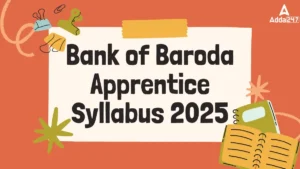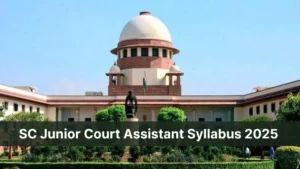
Q1. The average marks of Sameer decreased by 1, when he replaced the subject in which he has scored 40 marks by two other subjects in which he has just scored 23 and 25 marks respectively. Later he has also included 57 marks of Computer Science, then the decreased average marks obtained after first step, increases by 2. How many subjects were there initially?
Q2. Eleven years earlier the average age of a family of 4 members was 28 years. Now the average age of the same family with six members is yet the same, even when 2 children were born in this period. If children belong to the same parents and the age of the first child at the time of the birth of the younger child was same as there were total family members just after the birth of the youngest members of this family, then the present age of the youngest member of the family is
Since it is obvious that just after the birth of the youngest member (i.e., child) was 6 family members in the family. Therefore, at the time of the birth of the youngest child the elder child’s age was 6 years.
Now the sum of their ages
=x+(x+6)=12=(168-156)
⇒x=3
So, age of youngest member of family = 3 years
Q3. An oil refinery takes 100 ℓ of crude oil as input and after refining for 1 h gives certain amount of output oil X l. This can be sold in the market at a profit of Rs. 30 per l. If this oil is further refined for ½ h, it gives oil Y l. This can be sold at a profit of Rs. 50 per L. Output and input ratio at both the stages is 90%. The maximum profit amount that can be earned from 1000 L of crude input out of both the cases is ?
Q4. Rohit bought 20 soaps and 12 toothpastes. He marked-up the soaps by 15% on the cost price of each, and the toothpastes by Rs. 20 on the cost price each. He sold 75% of the soaps and 8 toothpastes on marked price and made a profit of Rs. 385 on sold items. If the cost of a toothpaste is 60% the cost of a soap and he got no return on unsold items, what was his overall profit or loss?
Q5. Sandeep after travelling 50 km meets a person Ranjeet who suggests him to go slower. He then proceeds at ¾ of his former speed and arrives at his destination 35 minutes late. Had the meeting occurred 24 km further Sandeep would have reached its destination 25 minutes late. Find the initial speed of Sandeep.
Q6. A man invested an amount into three schemes P, Q and R in the ratio of 5 : 6 : 9 at the rates of 20%, 15% and 10% respectively. Schemes P and R offered compound interest annually, while scheme Q offered simple interest annually. Total interest received by man from scheme P and Q together is Rs. 1899 more than total interest received from scheme R after two years. If man would invest total amount on C.I at the rate of 15% p.a. for same time, then find the total interest received by the man?
Q7. There are two buckets, which contains some fruits. First bucket contains three mangos and six oranges, second bucket contains seven mangos and two oranges. One bucket is selected at random and one fruit is drawn from it. Find the probability of selected fruit is not mango?
Q8. At IIM Bangalore, 60% of the students are boys and the rest are girls. Further 15% of the boys and 7.5% of the girls are getting a fee waiver. If the number of those getting a fee waiver is 900, find the total number of students getting 50% concession if it is given that 50% of those not getting a fee waiver are eligible to get 50% concession?
Q9. A manufacturer estimates that on inspection 12% of the articles he produces will be rejected. He accepts an order to supply 22,000 articles at Rs. 7.50 each. He estimates the profit on his outlay including the manufacturing of rejected articles, to be 20%. Find the cost of manufacturing each article.
Q10. A dealer marks articles at a price which is 30% above than its cost price. 6% of the consignment of goods was lost in a fire in his premises, 24% of total was soiled and had to be sold at half the cost price. If the remainder was sold at the marked price, what percentage profit or loss did the dealer make on that consignment?
Directions (11 - 15): Find the wrong number in the given number series:
Q11. 1524, 1541, 1576, 1626, 1694
Q12. 169, 184 , 139, 216, 109
Q13. 32, 18, 10.8, 6.48, 3.888
Q14. 54, 58, 117, 354, 1419, 7098
Q15. 0, 4, 18, 54, 100, 180
- Quantitative Aptitude Study Notes for Bank Exams
- 100 MCQs Data Interpretation | Download Free PDF's of DI
- Quantitative Aptitude Questions for all Competitive Exams





 The Hindu Review October 2022: Download ...
The Hindu Review October 2022: Download ...
 Bank of Baroda Apprentice Syllabus 2025 ...
Bank of Baroda Apprentice Syllabus 2025 ...
 Supreme Court Junior Court Assistant Syl...
Supreme Court Junior Court Assistant Syl...




